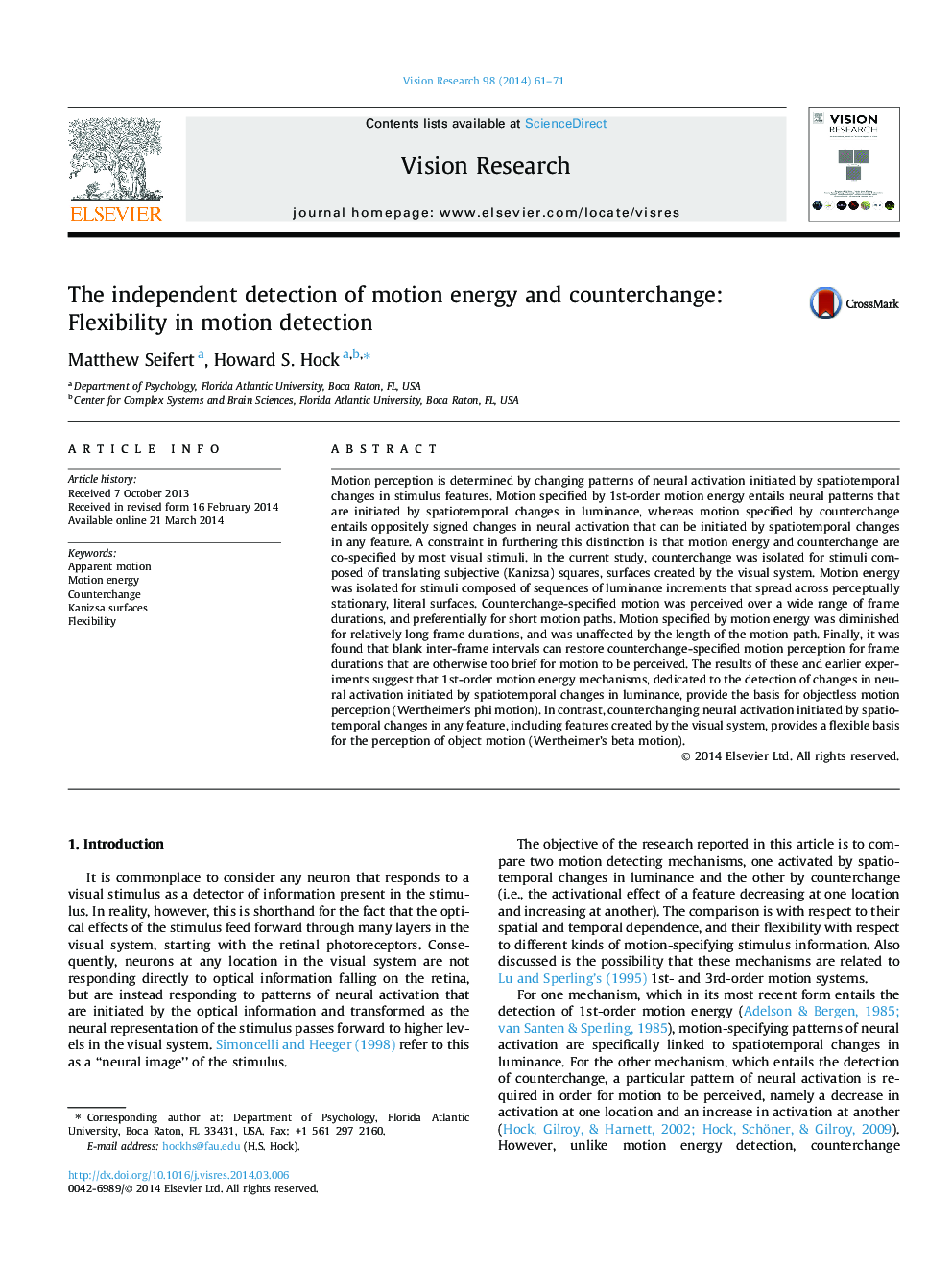| Article ID | Journal | Published Year | Pages | File Type |
|---|---|---|---|---|
| 6203513 | Vision Research | 2014 | 11 Pages |
â¢The detection of motion energy and counterchange are isolated in this study.â¢Long frame durations diminish motion energy detection; no effect of path length.â¢Counterchange detection unaffected by frame duration; depends on path length.â¢Counterchange detection is a flexible basis for perception of object motion.â¢Luminance-dependent motion energy is basis for perception of objectless motion.
Motion perception is determined by changing patterns of neural activation initiated by spatiotemporal changes in stimulus features. Motion specified by 1st-order motion energy entails neural patterns that are initiated by spatiotemporal changes in luminance, whereas motion specified by counterchange entails oppositely signed changes in neural activation that can be initiated by spatiotemporal changes in any feature. A constraint in furthering this distinction is that motion energy and counterchange are co-specified by most visual stimuli. In the current study, counterchange was isolated for stimuli composed of translating subjective (Kanizsa) squares, surfaces created by the visual system. Motion energy was isolated for stimuli composed of sequences of luminance increments that spread across perceptually stationary, literal surfaces. Counterchange-specified motion was perceived over a wide range of frame durations, and preferentially for short motion paths. Motion specified by motion energy was diminished for relatively long frame durations, and was unaffected by the length of the motion path. Finally, it was found that blank inter-frame intervals can restore counterchange-specified motion perception for frame durations that are otherwise too brief for motion to be perceived. The results of these and earlier experiments suggest that 1st-order motion energy mechanisms, dedicated to the detection of changes in neural activation initiated by spatiotemporal changes in luminance, provide the basis for objectless motion perception (Wertheimer's phi motion). In contrast, counterchanging neural activation initiated by spatiotemporal changes in any feature, including features created by the visual system, provides a flexible basis for the perception of object motion (Wertheimer's beta motion).
